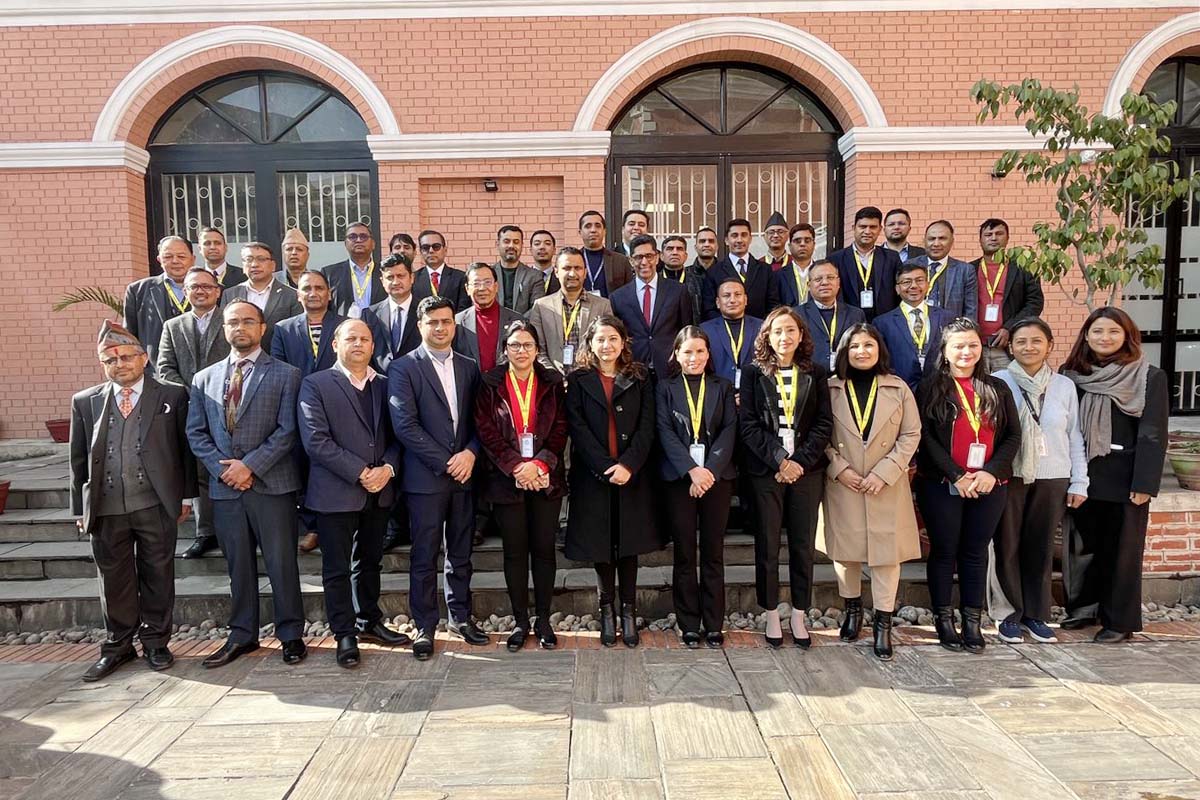
KATHMANDU: The World Bank in coordination with the Ministry of Finance (MoF) held a two-day learning event last week on 'Managing Risks and Sustainable Finance'.
Representatives from the Ministry of Finance, the Public Debt Management Office, the Financial Comptroller General Office, Nepal Rastra Bank (NRB), Nepal Bankers’ Association, Nepal Insurance Authority, Confederation of Nepalese Industries, and other financial sector professionals attended the event.
Participants discussed derivatives instruments and international experiences with the use of financial instruments to address different market risks including interest rate, currency, liquidity, and commodity price risks. They also discussed the benefits of and the critical steps needed to set up a national hedge programme from a fiscal risk management perspective.
“The Ministry of Finance is interested in working with the World Bank on a detailed cost-benefit study to evaluate the potential advantages of adopting a hedging mechanism to manage financial risks,” said Ram Pramod Yadav, Under Secretary at MoF. “There is a need to implement financial instruments in new projects on a pilot basis to help practitioners and policymakers understand the significance of structure approaches in mitigating risks from uncertain market conditions.”
Participants discussed the technical support the World Bank can provide to set up relevant knowledge exchange programmes, as well as the bank’s various lending instruments.
“The World Bank is committed to working with the Government of Nepal to strengthen the country’s risk management strategies and set up a hedging programme to manage financial risks,” said Fabio Aparecido Da Silva, senior Financial Officer at the World Bank. He emphasized the need to develop a regulatory framework and build capacity to ensure that hedging strategies serve as effective tools for managing risks.
“I welcome the idea of implementing hedging mechanisms to address market volatility on commercial terms, which could help prevent undue fiscal pressures on the nation,” said NRB Deputy Governor Bam Bahadur Mishra. “Endorsing market-driven solutions is key to efficiently managing financial risks, fostering sustainability, and navigating challenges, especially considering the country’s resource limitations.”
“The absence of sovereign ratings is a contributing factor to the high cost of borrowing for Nepal from international financiers. Leveraging the currency peg with India could address the absence of a transactable Nepali Rupee sovereign bond yield curve, as many transactions can be priced based on the long-term Indian Rupee-USD curve,” said Joseph Silvanus of Dolma Consulting. “Hedging serves as a good risk mitigating tool, and Nepal stands to gain by accessing the World Bank’s IDA window to uphold a robust balance of payments.”





-1737521245.jpg)

-1737450571.jpeg)
-1737447816.jpeg)